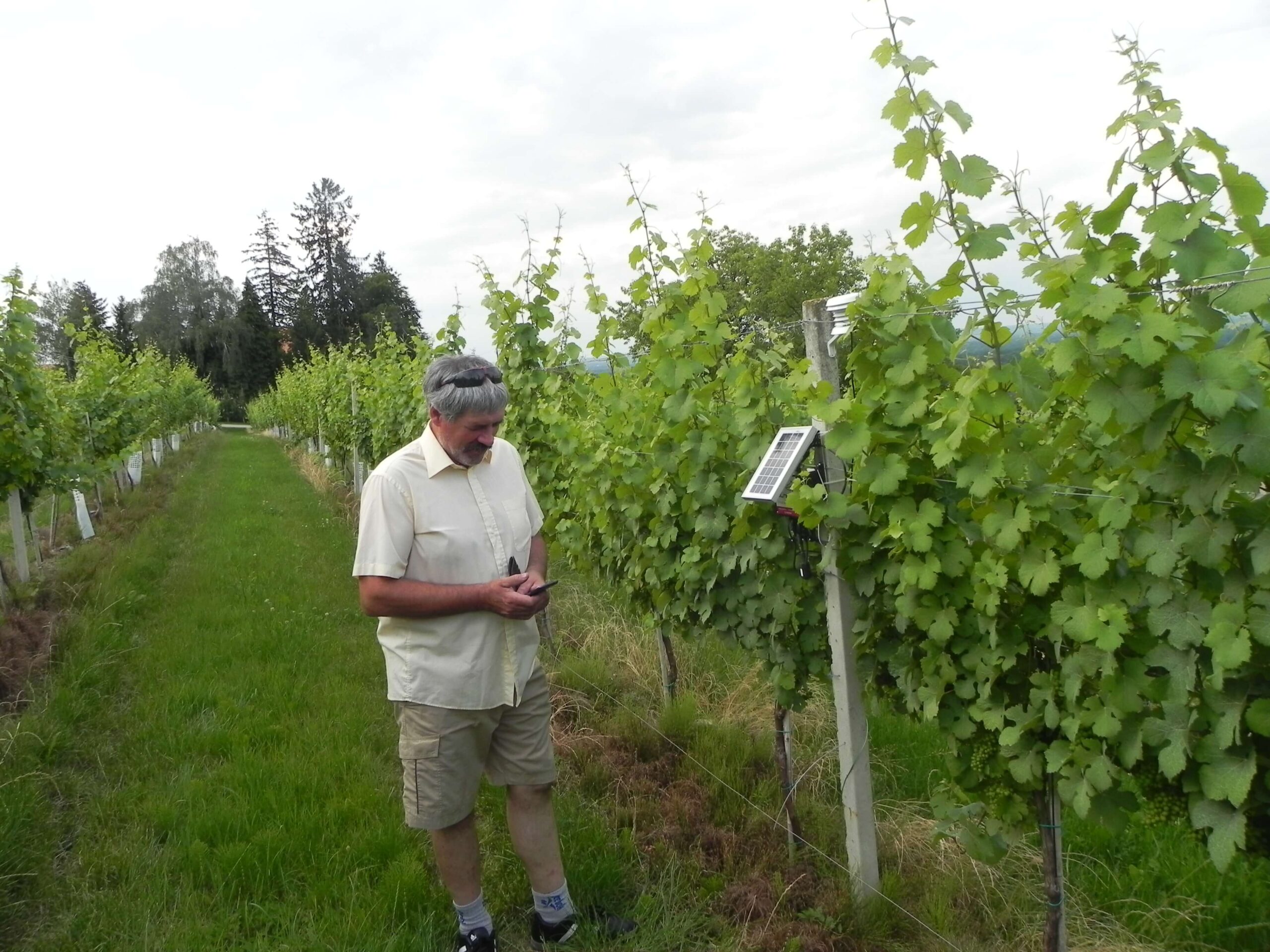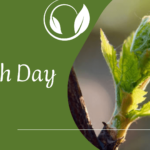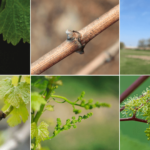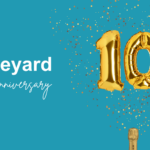In the recent years, there is a lot of buzz around IoT technologies and while some industries and verticals (such as industry and smart cities) received them very well, agriculture seems to take a more careful dip, and majority of farmers are still looking at IoT from a distance. And who can resent farmers; many of you don’t see how you could benefit from implementing those technologies. So let’s start at the beginning, what is IoT, and how can vineyards and winegrowers benefit from it?
What is IoT?
IoT stands for Internet of Things and refers to a network that connects different things and people with the Internet in order to collect and share data. Examples of IoT devices are smart devices, connected to the Internet: such as microwaves that can be automatically turned on from a phone app, self-driving Internet-connected cars that detect objects in front of them and report them, etc. Basically, any device with sensors that can connect to Internet to either share data, be contacted, or something else, can be referred to as an IoT device. In agriculture, IoT is used for different purposes, for example for measuring cattle life functions to know exactly when cow is fertile, and so on.
IoT technology in the vineyard
In vineyards, IoT technology is mostly used to collect environmental data such as temperature, humidity, rainfall, wind speed, soil moisture, etc. and use those data to improve the quality and quantity of harvested grapes, while minimizing the risk and waste.
IoT combines hardware and software platform for remote monitoring of vineyards. Hardware are wireless sensors that are deployed on vineyard plots and collect data about the micro-climatic data, soil data, and physical conditions of the plants. While software platforms are processing and presenting those data in a way which enable winegrowers to make an informed decision on daily vineyard operations. For example, to control pests and diseases, irrigate smarter, predict an optimal harvest moment, and thus bring down the labor costs and increase growers profitability.
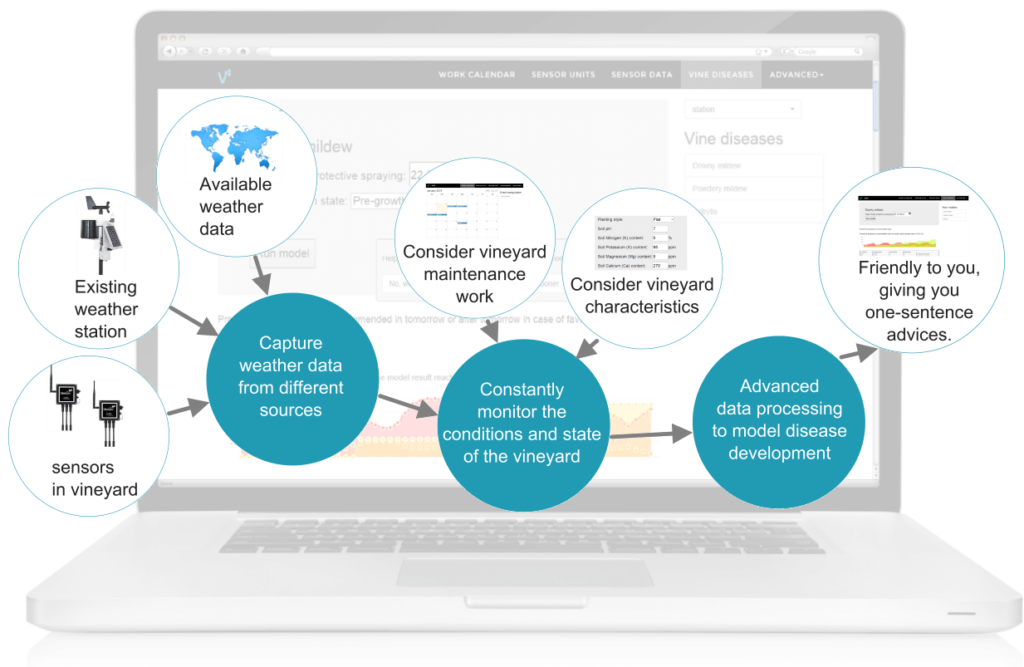
IoT technology and connected platforms are slowly getting into the vineyards worldwide. Winegrowers who use those networks see IoT as valuable assets in order to optimize vineyard performance and implement precision viticulture.
With IoT winegrowers can move away from calendar-based spraying and irrigation, and practice precision viticulture, which improves fruit and wine quality.
Using IoT in the vineyard have several benefits, to name only a few:
- Predicting and observing in-time vineyard conditions
Remote control of the situations in the vineyard enables growers to control vine health status, water stress and irrigation requirements from armchair or tractor. You can detect optimum time for harvesting, optimize crop load, determine vine pruning, cluster work, etc. And not only that, predicting weather conditions can help you prevent the worst case scenarios, for example in cases of hail or freeze occurrence.
- Preventing pest and diseases outbreaks
Grapevine diseases like mildews and botrytis are causing economic damages to growers year by year. Based on available data 13% of wine production in France was lost in 2015, which resulted in EUR 1 billion, while in California, annual yield losses account for 14% of the producer gross value of wine grapes. Hence fungicides cost money and if not applied at the right time can be useless and cause more damage then good. Captured data from the on-site sensors together with agro-mathematical models enable the forecast of disease development and therefore on-time spraying. Sensor data in combination with analytics help winegrowers to conserve resources and treat vines for pests and diseases very precisely and only where needed.
- Manage crop remotely
With the help of data from the vineyard, like soil moisture measures and automatic-irrigation system enable winegrowers to remotely turn on or off irrigation system, which enables winegrowers to manage crop more efficiently. Not only that fully automated irrigation systems can turn on and off the water based on sensor soil moisture readings.
- Better management
Accessing the data from the vineyard 24/7 enable you, the winegrowers, to know what is going on in the vineyard and enable you to prepare for work activities, manage workers, make compliance reports, know your costs, etc. at anytime and anywhere. Having all the vineyard data at one place help winegrowers with the management of the workers and paperwork with ease.
- Cost savings
With the use of IoT, winegrowers can lower cost production by 20-30% mainly from using less water, fertilizers, fungicides, and work efficiently. With the use of IoT and smart analytics, winegrowers can lower the amount of spraying for around 30%, which brings a lot of saving from fewer pesticides use, less water use and less man work. One of the major benefits of the sensors is water conversation when irrigating vineyards. Our preliminary results show that winegrowers can save up to 50% of water with precision irrigation.
- Minimizing the environmental impact
Using less natural resources (such as water) and lowering the number of pesticides use enable growers to grow grapes in a more sustainable and environmentally friendly way.
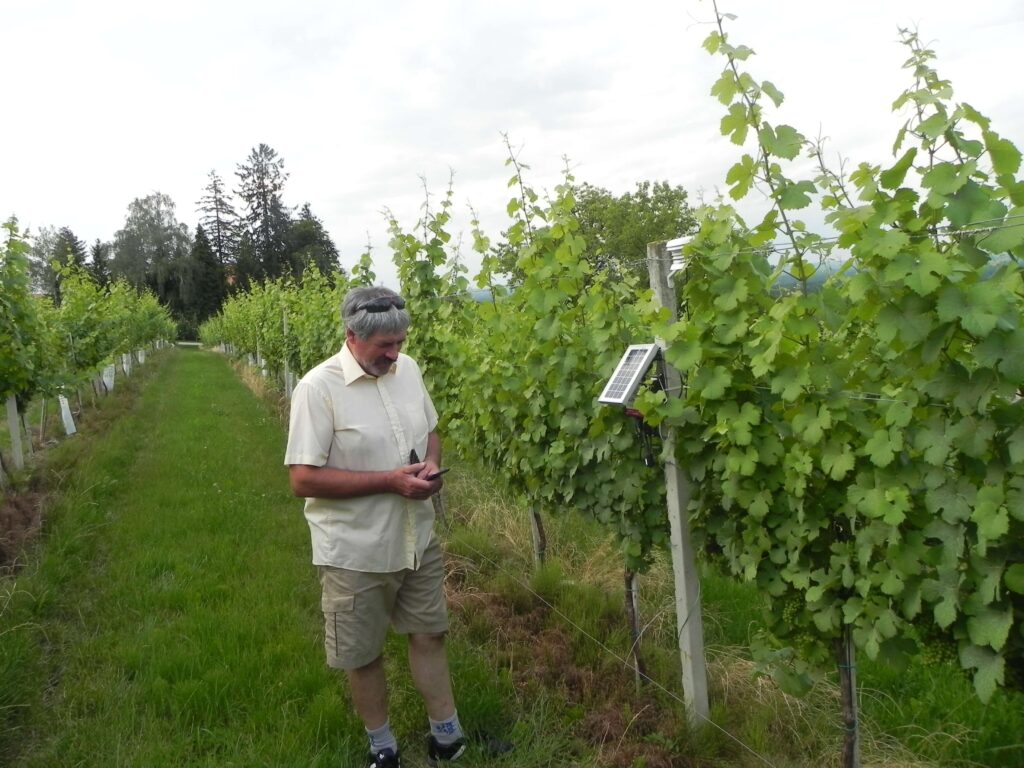
While IoT improves winegrower’s decision making, competitiveness and winery sustainability, those technologies as any other comes with a number of challenges that need to be addressed.
Talking with hundreds of winegrowers around the world, we know the concerns of winegrower regarding implementation of IoT in their vineyards – so let us name the most common ones:
- No tech knowledge
Many winegrowers are not tech savvy, which is perfectly fine. That’s why many of you believe you will not be able to use those technologies. Very legitimate concerns as several of those platforms can be a bit complicated to use, that’s why winegrowers should opt for user-friendly platforms which are easy to use, like eVineyard.
- Internet connection on the countryside can be poor
Unfortunately, in the age of the Internet, a lot of countrysides and thus farmers still have problems with internet and mobile accessibility, that’s why not all vineyards can use the same connectivity devices, like 4G for example. However, the industry has already detached this and new technologies and connectivities are developing, like LoRaWAN, which enable the connectivity of different sensor devices to the vineyard applications.
- Costs of investment
With using the right devices and software the investment can be return in a year or two. Of course, it all depends on what kind of devices and software you choose. There are several cost-effective devices available on the market, and yes, also the expensive ones with high quality sensors. At eVineyard, we have a saving calculator where you can calculate your savings by using sensor devices in the vineyard, and therefore calculate how fast can you return on investment.
Conclusion
IoT in the vineyard is helping winegrowers by facilitating high precision grape control, useful data collection and automated vineyard operations (such as vineyard irrigation), with an emphasis on water management, on-time spraying, and cost-effectiveness. IoT technology can help winegrowers analyze operational data to provide new insights and improve decision making on a day-to-day basis. And as we have already pointed out in one of our older posts on vineyard technology, the technology is usable only when the growers know what they want to achieve and accomplish with all the available solutions.
If you have any questions or concerns on implementing the IoT technology in your vineyard, please do contact us, we will be happy to help!
Sources:
Digital Transformation Monitor: Smart vineyard: management and decision making support fro wine producers. European Commission, October 2017. (online)
Orozco-Barbosa L., et.al. 2017. An Experimental Evaluation of IoT Technologies in Precision Viticulture. In: Applications for Future Internet. Lecture Notes of the Institute for Computer Sciences, Social Informatics and Telecommunications Engineering, vol 179. Springer, Cham
Internet of things, Wikipedia (Online, October 2018)


